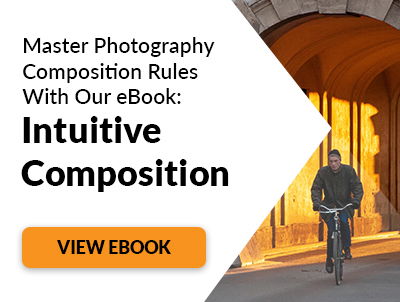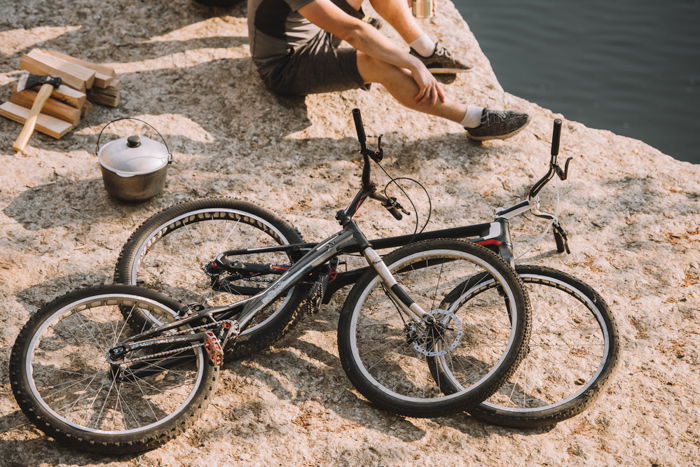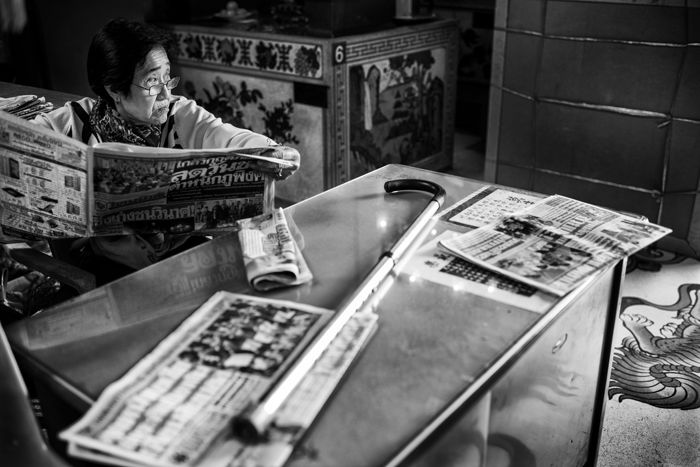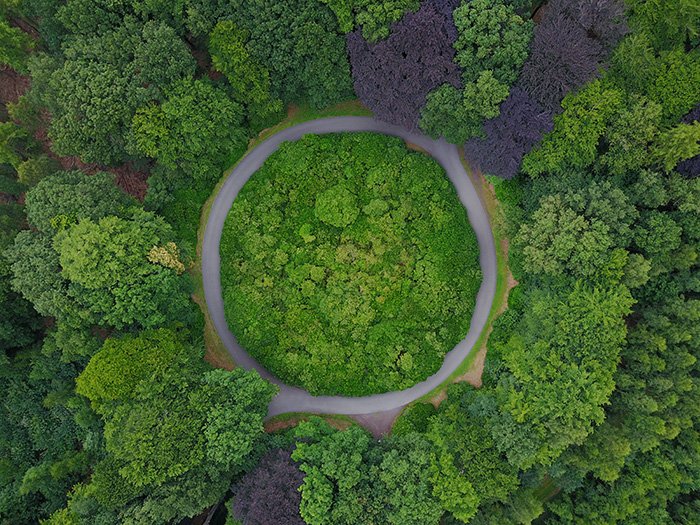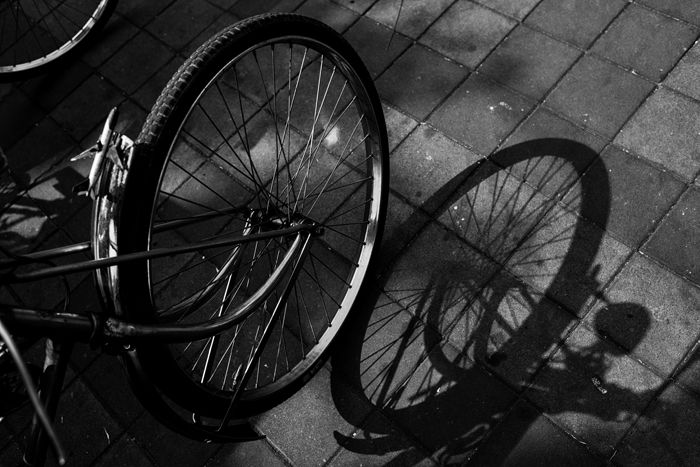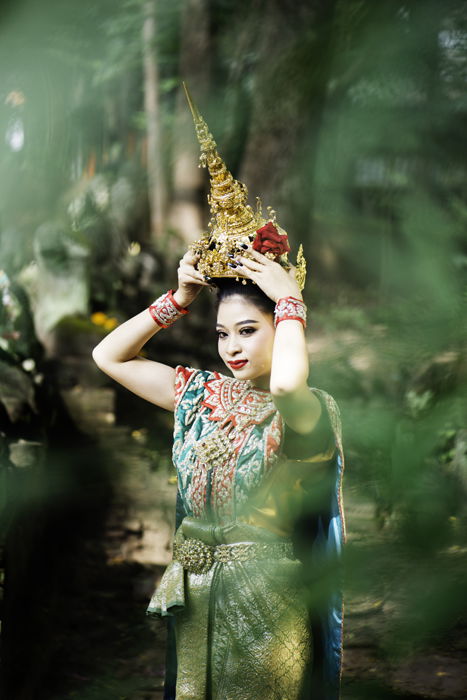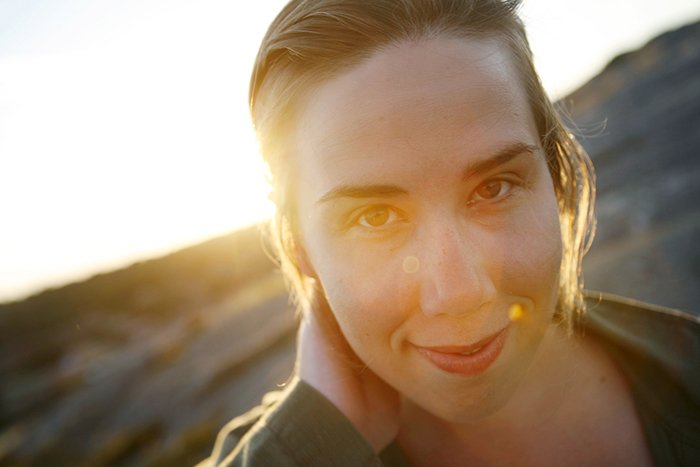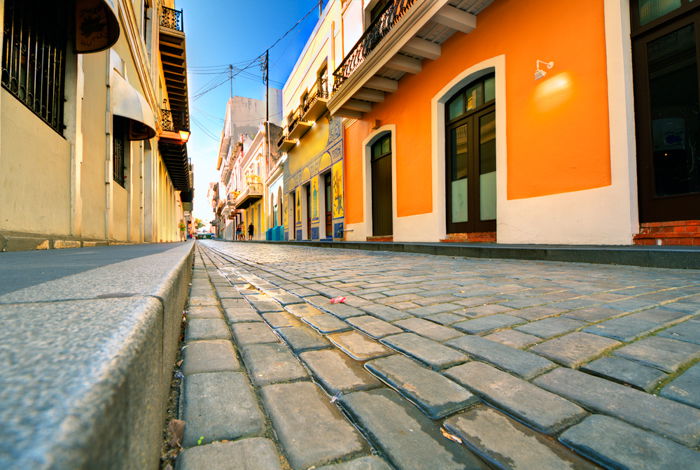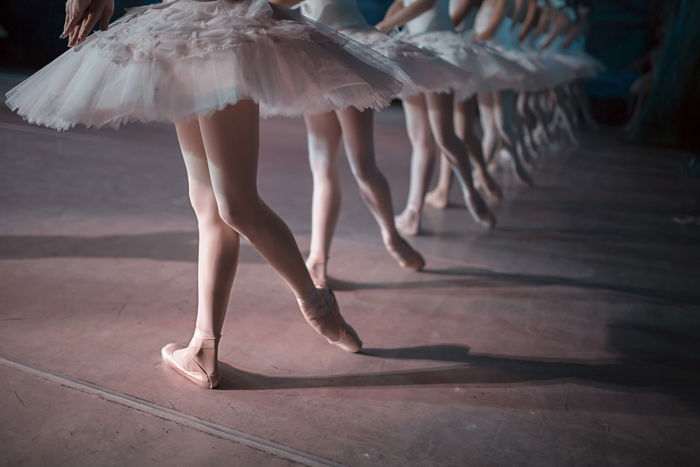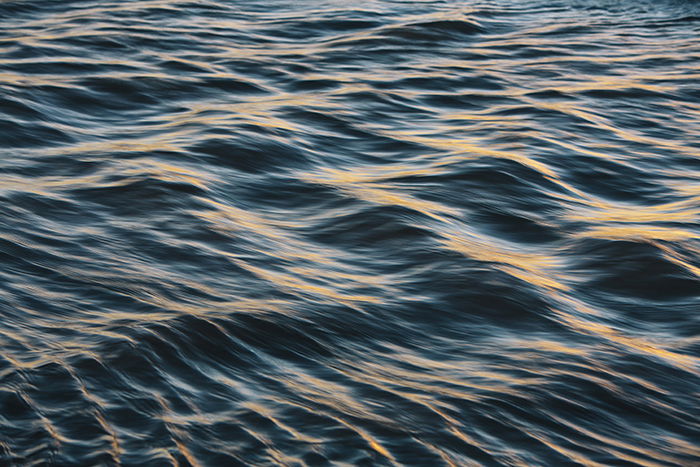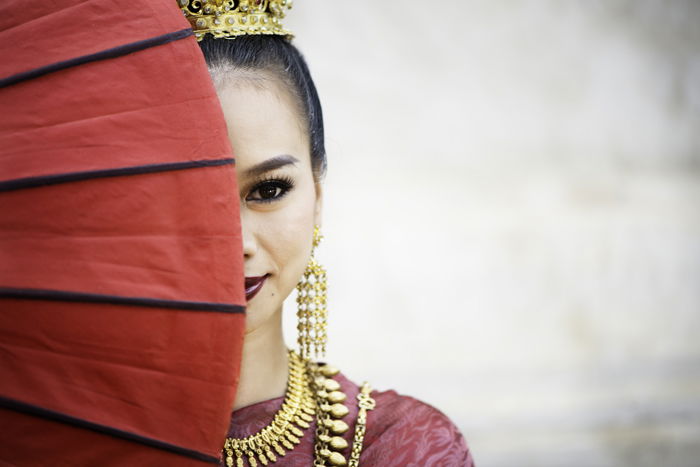This article gives you twelve unusual and interesting composition ideas to inspire you to be more adventurous. To use this technique effectively, concentrate on what’s relevant. This photo of this guy says a whole story without even showing him. You can imagine his day with his friends. Cycling to a beautiful destination and having a campfire and dinner in the evening. The image contains every element you need for construing the story. You can even imagine the guy himself, but cutting his head gives the image more mystery. Also, it puts the focus on the story, not only the composition.
11. Arrange Your Elements for an Unconventional Shot
Forget about the rule of thirds, leading lines, and all the other rules. Work at producing a good composition based on what you feel looks best. Take your time to make creative photographs. Look at lines and shapes. Bring balance to your photography composition by how you position your camera. Changing your point of view even a bit can alter your composition. Crouch down, move to your left or right. Lift your camera a little higher. For this photo of the woman reading the newspaper at the temple, I was standing. This angle allowed me to arrange all the elements well. My timing was also significant. When she was looking down at the newspaper there was no flow in the photo.
10. Look Higher Up
Coming close to your subject and looking up at it will produce a dramatic composition. The closer you are, the more dramatic it can appear. It’s easy to stand back and get an overall view of something. This perspective is not often the most creative. Moving in close to a tall subject so it towers over you gives an unusual and intriguing perspective. Using this photo composition tip can help you eliminate distracting backgrounds too. For example, shooting a building from this close makes a tight composition. It enhances the feeling of being small next to it. Also, perspective distortion is on your side when shooting this close. It makes the composition dramatic and helps to concentrate only on the building, without its surroundings.
9. Take a Bird’s Eye View
You can take a bird’s eye view and look down at your subject. Position your camera above and parallel with what you are photographing. You don’t have to be right above your subject. But this does often have more impact than if your camera is off at an angle. This is not how we view things every day. The best tool for reaching this view is a drone. You can fly high with it, to show scenes, no one saw like this before. But you can also show subjects from closer to the ground. Adding this composition technique helps create diversity.
8. Make a Shadow Your Subject
A photo where you include the shadow as the main subject is often interesting. Look for shapes creating eye-catching shadows. Frame them so the shadow is your primary focus. The bicycle wheel and its shadow, without the rest of the bike, created a unique picture. I did not need to include the whole of my subject. It’s clear to see that it’s a bike. Incorporating the shadow creates a balance with the two elliptical shapes.
7. Looking Through the Foreground
So you have one main subject. Try looking at it through something that’s in the foreground. Making a portrait and using this composition tip you might use a tree, fence, or lattice. You can use anything at all so long as you can still see enough of your subject. Be close enough to your foreground and use a wide aperture. You want whatever is in the foreground to be out of focus. If it’s too much in focus it will be more of a distraction than an enhancement. It is not important for your foreground to be recognisable in your composition for it to work well. Sometimes the more blurred it is, the better. In this photo of a Thai woman in traditional costume I used leaves on a tree as my foreground. This is different than the more classical rule of composition of a frame within a frame.
6. Tilt Your Camera
You do not always need to hold your camera horizontally or vertically. Throw your horizon off by holding your camera at an angle. You can use this technique to exclude distracting elements from the background. Holding your camera in a conventional way might add distractions. Tilt it instead. The more pronounced the angle, the less it will look like a bad composition. Finding a straight diagonal line within your composition you can use it as an edge to your frame. This produces a more creative photograph. And the viewer will know your camera angle is deliberate.
5. Get Down on the Ground
Taking a worm’s eye view of the world produces interesting compositions. Not many people lie on the ground to look at things. If you get low to compose, you will be providing a more unique perspective of your subject. And you can make the most of an expansive foreground. This will draw the viewer’s eye to the main subject. The perspective will seem exaggerated. Especially if you are using a wide-angle lens. You can make an everyday scene unique just by showing it from this new angle.
4. Use Repetition for More Creative Photos
When you have more subjects that are the same, use them all in your composition. You might find it better to hide one behind the other. Don’t get stuck thinking you need to show all to take a creative composition. By not including the whole of your subject your photograph will be more intriguing. You can build questions in the viewer’s mind if the whole of your subject is not visible. This way you can enhance patterns appearing in everyday scenes. They might be visible only for a moment, but capturing them preserves a little piece of regularity.
3. Emphasise Your Landscape Foreground
Focus part of your composition in the foreground when taking a landscape. Most people will aim to incorporate as much of a landscape scene as possible. Often you can make a more creative photograph by including less, not more. Look for something that is integral to your landscape. Come in close to it and include it in an eye-catching way as the main part of your composition. Rural landscapes can often be wide and empty. Often rather dull.
2. Use Details to Draw Attention to Your Subject
Compose using minimal elements or small parts of elements. By only showing a small part of something you can stimulate curiosity in your photo. Don’t always show the whole elephant or the whole of the model. This technique is best used when you are working on a series of photos of the same subject. Use it to highlight interesting details in your subject. You can become very abstract with this photography composition idea. Think outside the box to incorporate or exclude parts of your subject. That you, you are creating a strong composition.
1. Try Partially Hidden Portraits
Not showing the whole of your portrait subject’s face is less abstract. Being selective in what you show and how much produces a more creative portrait. By hiding part of your subject you can create a sense of mystery. Try this when you are photographing someone with a scar or some other kind of disfigurement. Mask it using this technique. This can also work well when your model has very different shaped eyes. Hiding one of them can often make a more attractive portrait.
Bonus Tip: Make Your Own Rules of Composition
You do not need to stick to any rules of photography. Experiment and find out what works for you. Break the rules. Make your own. Be prepared to create some pretty weird looking photos. Know that many times your photography composition ideas will not work. With a good digital workflow where you review your images and compare them, this will help you learn. As you explore different ways of composing photos, you will begin to enjoy using certain techniques. Stick with these. As you identify ones you have used and love the results, use them more. This can help you develop your own style, especially if you photograph the same type of subject often. Unless your subject is one you photograph all the time, make sure you get some ‘safe’ shots. Take a few photos using more conventional composition techniques. This is especially important when you are taking photos for an assignment or client.
Conclusion
Study the work of master photographers and painters. Find artists whose work you like, especially if it is a bit abstract in nature. Ponder how they have composed some of their more unusual pieces. Ask yourself what it is that you like about the compositions. Many times you will be able to see patterns in the way photographers compose their images. Build up your own set of composition ideas and techniques. Keep the ones that create the most interesting photographs. Use them often and you will see your photography grow.


